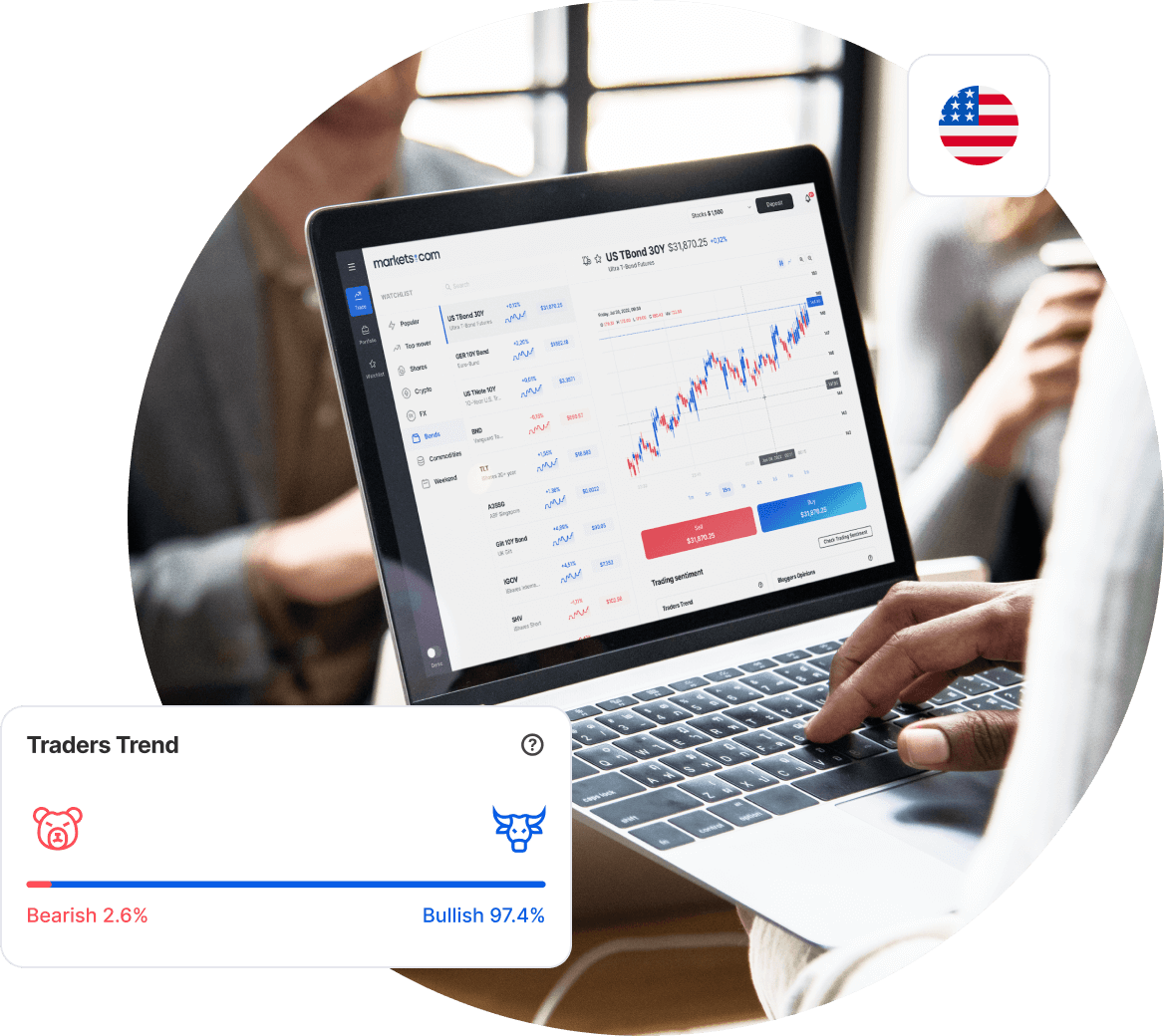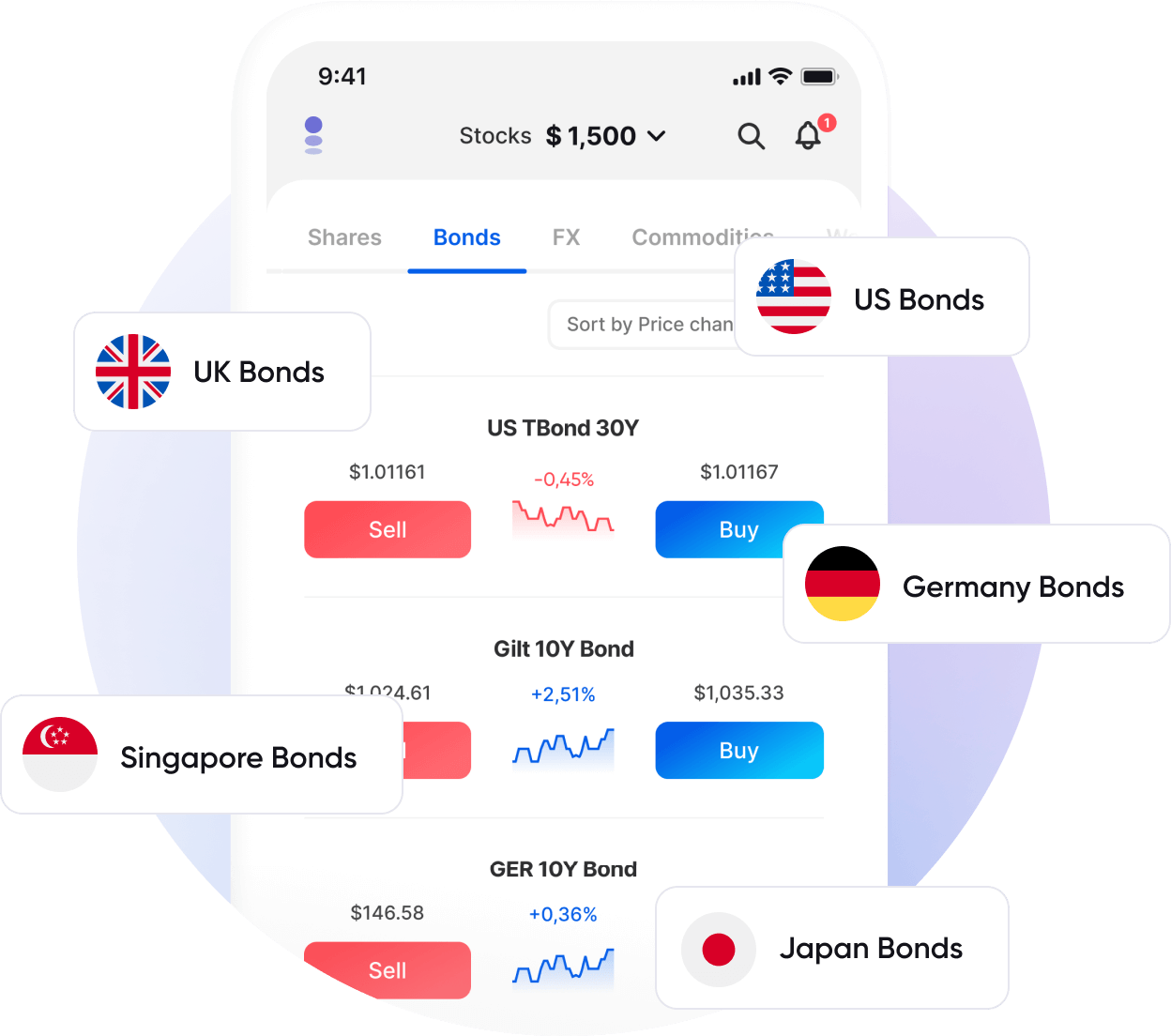CFDs are complex instruments and come with a high risk of losing money rapidly due to leverage. 77.3% of retail investor accounts lose money when trading CFDs with this provider. You should consider whether you understand how CFDs work and whether you can afford to take the high risk of losing your money.
Take a position on where you think interest rates are heading with our tradeable government bond markets.
Trade Bonds
Trade CFDs - A CFD account will allow you to trade on bonds directly and via access to a range of ETFs.

Trade on a variety of bond ETFs that track the daily performance of government bonds, such as the ProShares UltraShort 20+ Year Treasury (TBT).
Start tradingСalculate your hypothetical P/L (aggregated cost and charges) if you had opened a trade today.
Market

Instrument


Account Type
Direction
Quantity
Amount must be equal or higher than
Amount should be less than
Amount should be a multiple of the minimum lots increment
USD
EUR
GBP
CAD
AUD
CHF
ZAR
MXN
JPY
Value
Commission
Spread
Leverage
Conversion Fee
Required Margin
Overnight Swaps
Past performance is not a reliable indicator of future results.
All positions on instruments denominated in a currency that is different from your account currency, will be subject to a conversion fee at the position exit as well.
A bond is a debt security issued by a government, corporation or other entity to raise capital. When a trader buys a bond, they are effectively loaning money to the issuer in exchange for regular interest payments and the return of the principal at maturity. Bonds have a fixed term, or maturity, which can range from a few months to several decades.
A TNOTE refers to the Treasury Note. It is a debt security issued by the US Treasury with a maturity of 2 to 10 years, while a TBOND refers to a Treasury Bond, another type of debt security issued by the US Treasury with a maturity of 10 to 30 years. Both are considered lower-risk investments and are commonly traded in financial markets, but one has a longer maturity date attached.
To ensure that you're well-informed about your trades, you can easily locate the rollover date for each CFD by visiting its respective asset class page on the markets.com website. Rollover means switching to a new futures CFD contract - it can affect the underlying contract's value and expiry date. It's crucial to be mindful of the rollover date for each CFD on Futures as it can significantly impact your trading outcomes.